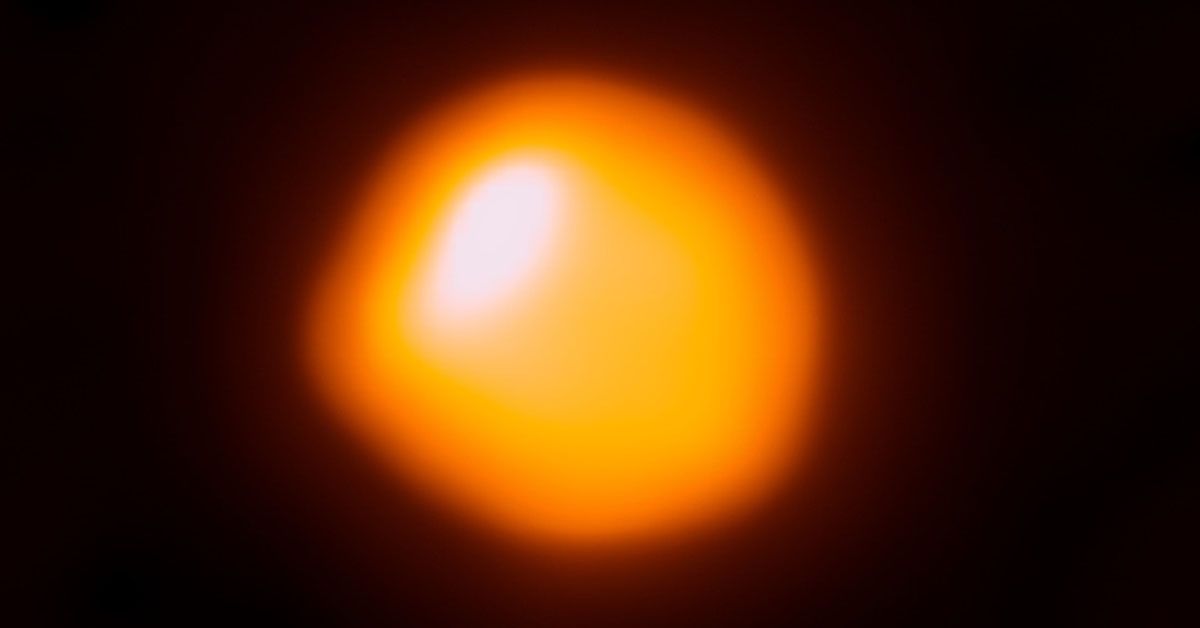Imagine a massive star, far beyond our sun in size, and pulsating with an orange-red glow, positioned on the left shoulder of the famed Orion constellation. This star, known as Betelgeuse, captures the fascination of astronomers and stargazers alike.
This colossal celestial body has recently become the subject of heated discussions and intense scrutiny. Why, you ask? Betelgeuse has been acting a bit odd. Its brightness has been fluctuating irregularly and more dramatically than ever before.
Stellar Features of Betelgeuse
Betelgeuse isn't your ordinary star. To understand this celestial wonder, we first need to know its physical characteristics. Betelgeuse is a red supergiant star, which simply means it's far larger and colder than a star like our Sun.
How much larger? Well, if you placed Betelgeuse at the center of our solar system, its size would extend beyond the orbit of Jupiter!
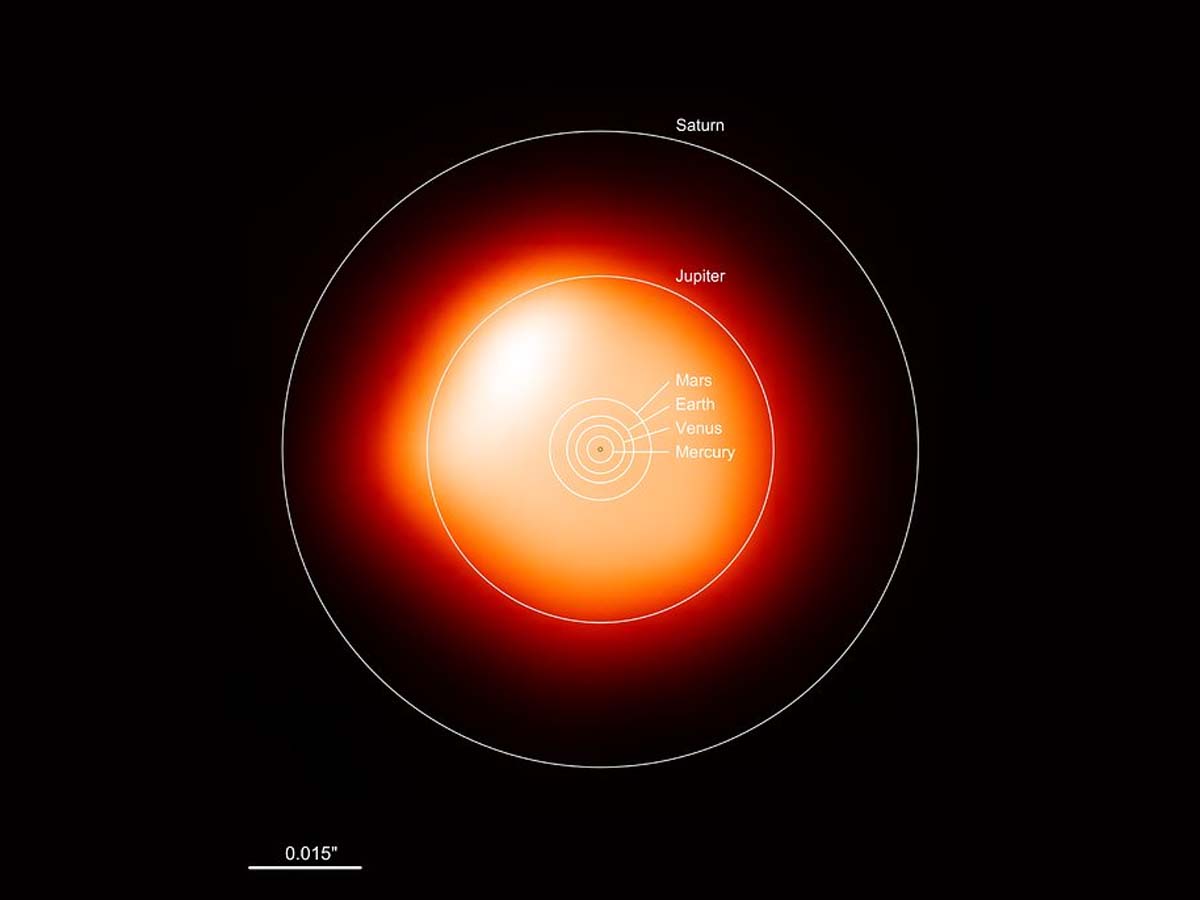
Now, if you've ever gazed at the night sky, you might recognize the constellation Orion, also known as "The Hunter". Look for three bright stars in a line, those form Orion's belt.
To the upper left of the belt, you'll spot a distinctive star with a muted orange-red color. That's Betelgeuse, marking the right shoulder of Orion from our perspective.
Why is Betelgeuse red, you might ask? As stars age and expand, their surface temperature decreases, giving them a reddish appearance. Hence, Betelgeuse, being a cooler star compared to our Sun, glows with a reddish hue.
The Uniqueness of Betelgeuse
While all stars are unique in their own way, Betelgeuse has a few features that make it stand out. One such attribute is its changing brightness. Betelgeuse is what astronomers call a "pulsating semiregular variable star". This means that its brightness changes in a not-so-regular pattern, oscillating between brighter and dimmer periods.
One notable episode in Betelgeuse's recent history was 'The Great Dimming'. In late 2019, observers noticed that Betelgeuse's brightness had dipped drastically, more than it ever had in the past.
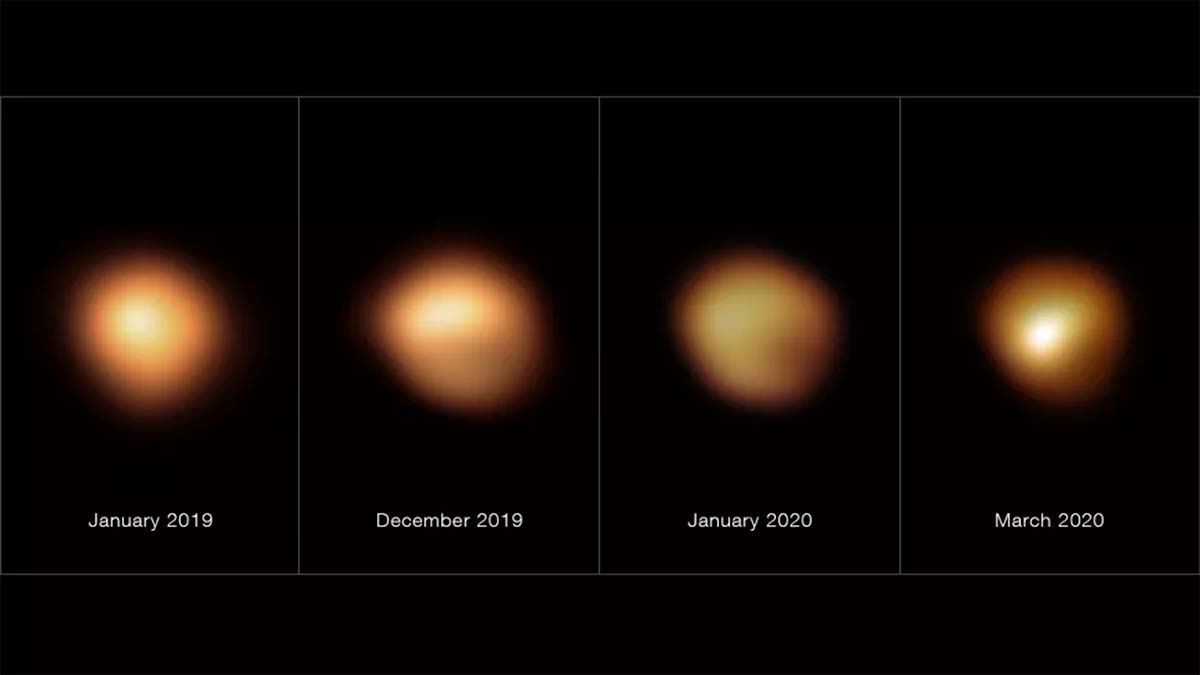
But what caused this unusual dimming? Scientists suggest that it was likely due to a giant cloud of dust. This dust, they believe, was ejected from Betelgeuse itself, forming a thick cloud that partially obscured the star, causing the dimming effect we observed.
An intriguing star indeed! But this just scratches the surface of Betelgeuse's complexities. So, let's keep exploring!
Indications of an Upcoming Supernova
Stars lead dramatic lives, especially when they're close to the end. For stars like Betelgeuse, the end comes in the form of a supernova, a grand explosion that outshines all the other stars in its galaxy.
But how does a star go from a peaceful ball of gas to a spectacular cosmic firework? The answer lies in a process called stellar nucleosynthesis.
Let's break it down. Stars are powered by nuclear fusion, a process where atomic nuclei combine to form a heavier nucleus. In the core of a star like our Sun, hydrogen nuclei combine to form helium in a process known as hydrogen burning.
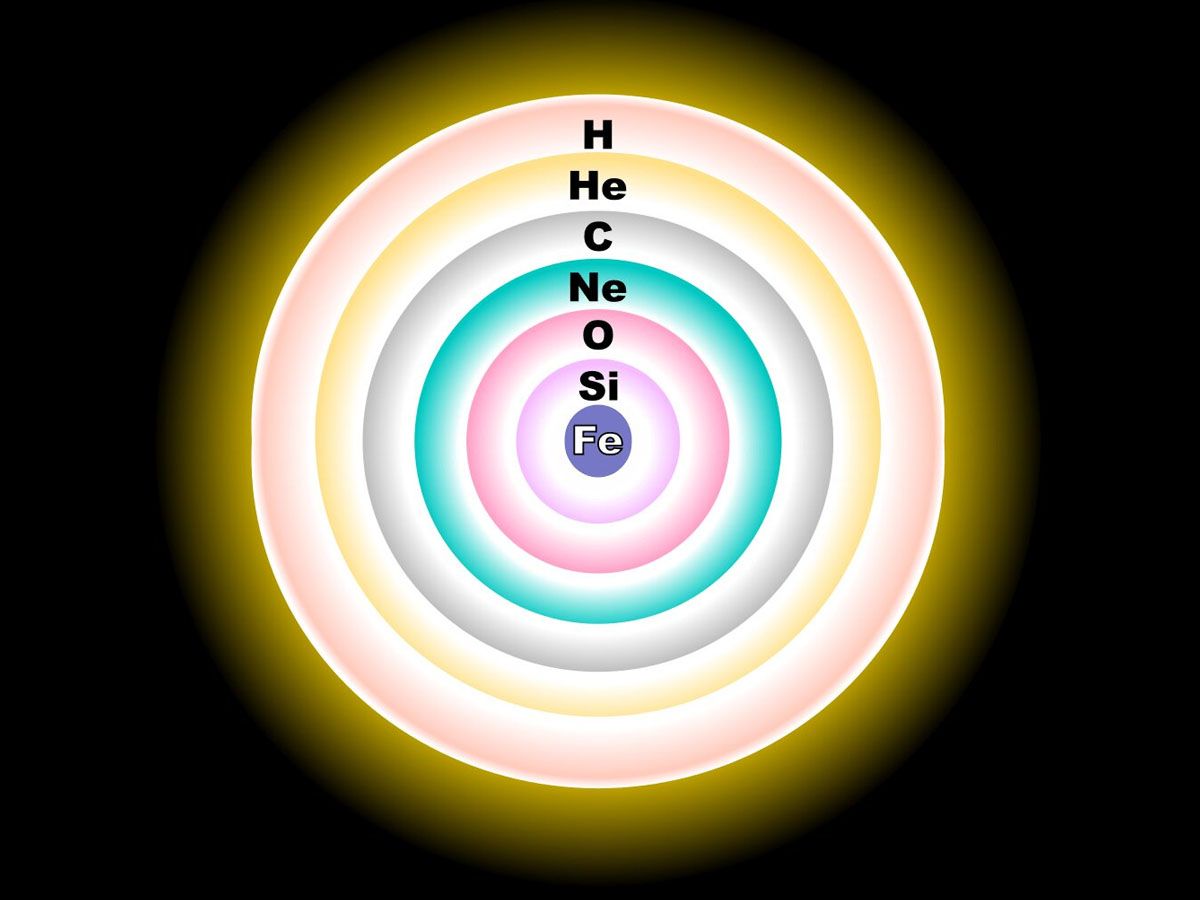
But for massive stars like Betelgeuse, that's just the beginning. After the hydrogen fuel is used up, helium nuclei combine to form carbon in a process called helium burning. The star continues to fuse heavier elements, like carbon and oxygen, all the way up to iron.
Once a star starts forming iron in its core, it's a sign that the end is near. The fusion of iron doesn't release energy like the fusion of lighter elements, causing the star to collapse under its own gravity, and then...boom! A supernova explosion.
Recent research, specifically a paper by Hideyuki Saio titled "The evolutionary stage of Betelgeuse inferred from its pulsation periods", suggests that Betelgeuse might be closer to this dramatic end than we previously thought.

Observations indicate that Betelgeuse is currently in the 'core carbon-burning stage of its life. This means it's fusing carbon into heavier elements in its core, a stage that typically precedes a supernova. These findings make Betelgeuse a prime candidate for the next Galactic supernova.
Predicting the Supernova's Timeline
Estimating the timeline for a supernova event is a tricky undertaking. Scientists utilize a range of models in an attempt to map out the various phases of a star's existence, yet these models aren't foolproof.
One technique astronomers employ to anticipate a supernova event is to observe the star's cycles of brightness changes, also known as its pulsation periods.
By aligning these periods with relevant models, astronomers can approximate a star's stage in its lifespan and predict when it might explode in a supernova.
Or possibly hundreds of years, if their model D applies from table 2 and if I'm reading the paper correctly. But yes, let's hope it's tens!
— Jonathan McDowell (@planet4589) June 2, 2023
Nonetheless, the process of making these forecasts is riddled with uncertainties stemming from both the observational data and the models used. For instance, the surface conditions of Betelgeuse remain largely consistent during the latter phases, right up to carbon exhaustion.
This constant state makes it challenging to pinpoint exactly where Betelgeuse lies in its life cycle. Is it in the phase of helium burning, or has it transitioned into carbon burning? Different models propose varying possibilities for these queries.
Despite these ambiguities, astronomers remain committed to their study of Betelgeuse and other red supergiants. The goal is to garner a deeper understanding of these magnificent celestial entities and the dramatic conclusions they face.
Impact of Betelgeuse's Supernova
The day Betelgeuse decides to transition into a supernova, it will offer us an astronomical spectacle like no other.
It would be so luminous that it could potentially eclipse the moon's glow in our night sky and might even be visible during daylight hours! This awe-inspiring cosmic event would undoubtedly be a must-see, a singular experience that everyone on Earth would cherish.
But does this astronomical marvel carry any scientific implications for our planet? In the immediate sense, no. Betelgeuse resides at a safe distance, ensuring that the supernova would not directly harm us.

However, the blast wave from the supernova would hit Earth in roughly 100,000 years, leading to a marginal uptick in cosmic rays. Yet, there's no cause for alarm as this increase won't significantly impact life on our planet.
The emotional response to such an event would differ greatly among people. While some might marvel at the breathtaking spectacle, taking in the cosmic grandeur, others could respond with apprehension or bewilderment.
It's not unlikely that the event might give rise to a spate of conspiracy theories or spawn pseudo-scientific conjectures. After all, a supernova occurring in our cosmic vicinity is not an everyday occurrence!
Opportunity for Astronomical Study
Witnessing a supernova would undoubtedly be a mesmerizing experience for us ordinary folks. But for astronomers, it would be akin to hitting the jackpot.
Supernovae aren't just visually impressive phenomena. They are rich sources of scientific information as well. The explosive death of a star unveils hidden aspects of its existence, allowing astronomers to deepen their comprehension of how stars evolve.
Furthermore, the aftermath of this explosion, such as the formation of neutron stars or black holes, provides additional material for investigation. These remnants offer crucial insights into the end phases of a star's life cycle and the intricate processes that take place during a supernova event.
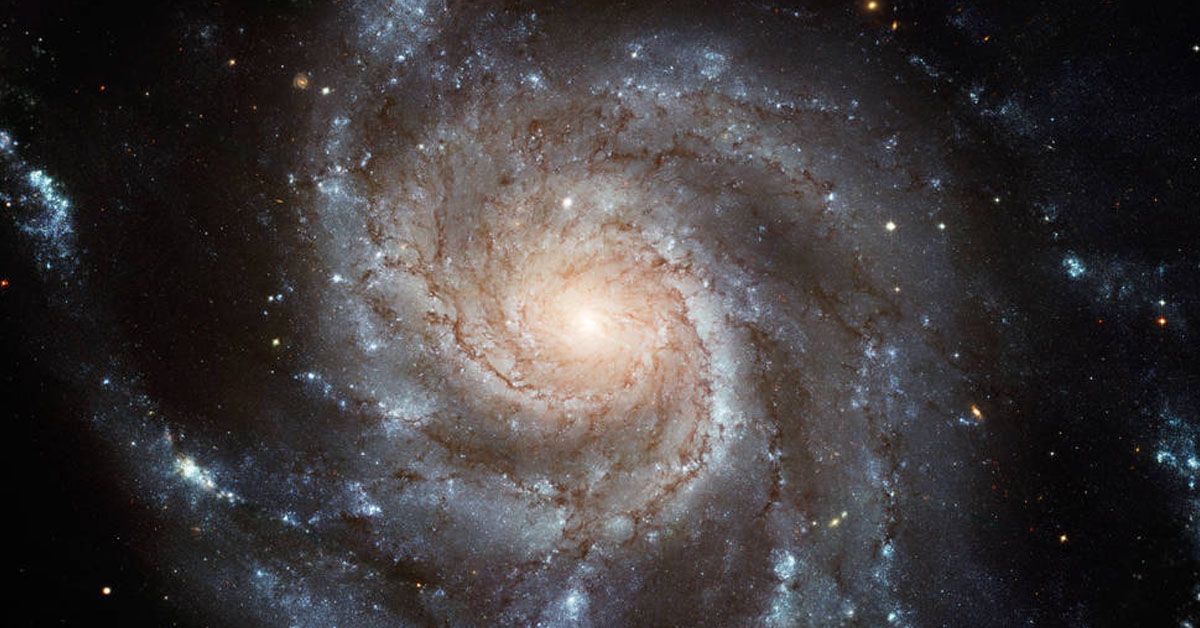
Additionally, supernovae play a critical role in the formation of numerous elements that we find on our own planet. Consequently, studying these spectacular occurrences not only sheds light on the birth of our planet but also traces our own cosmic lineage.
Every single atom that makes us was once housed within a star and a significant portion of those atoms were created during the fury of a supernova explosion.
So, when the time comes for Betelgeuse to transform into a supernova, it won't be merely a brilliant spectacle in the sky. It will present a singular opportunity to explore the enigmatic depths of the cosmos and further understand our connection to it.
Sources: earthsky.org / universetoday.com
